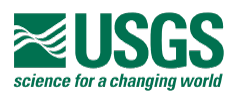Landscape Partnership Resources Library
DOI Nature-based Solutions Roadmap
The purpose of the Department of the Interior Nature Based Solutions Roadmap is to provide Department of the Interior (DOI) staff with consistent and credible information about nature-based solutions, such as which strategies match certain conditions and goals, what co-benefits they are likely to provide, example projects, and additional resources for project planning, construction, and monitoring.
USDA Launches New Bobwhite Conservation Pilot and Announces General Conservation Reserve Program Signup
The opportunity we have been waiting for to stop the national decline of bobwhite quail. Using brand new science tools, WLFW will help landowners manage and connect grassland and savanna habitat in the Central and Eastern US. Together we can improve habitats, measure our progress, and reestablish this iconic rural species to our landscapes!
Agenda: Designing for Aquatic Organism Passage at Road-Stream Crossings, Virgina (4 - 8 March 2024)
Course Objectives-Provide engineers, biologists, hydrologists, and other engaged disciplines the necessary skills to design road-stream crossing structures that will accommodate aquatic organism passage, provide for more natural channel function, and maximize the long-term stability of the structure. The primary design approach is stream simulation.
Technical Training Workshop-The Stream Simulation Design Approach for Providing Aquatic Organism Passage at Road-Stream Crossings
This 4.5-day workshop will present the USDA Forest Service’s stream simulation method, an ecosystem-based approach for designing and constructing a channel through a road-stream crossing structure that reestablishes physical and ecological continuity along the stream corridor.
Macros by Tolerance
Document has macroinvertebrates sorted into groups 1, 2, and 3 based on pollution tolerance, with pictures.
Pebble Count Analyzer
Excel document to enter and analyze pebble count data to retrieve field values for the SQT.
BEHI and NBS Processing Form
Excel document for processing BEHI and NBS data collected in the field.
Parameter Selection Guide
Print this document and keep in your clipboard for reference. This document lists with metrics should be measured for various types of WLFW projects.
HBSQT Field Data Input Form (excel)
Excel document that mirrors the field datasheets for data input. Gray cells in this document are calculations that will give you field values for the HBSQT Spreadsheet.
HBSQT Field Datasheet Package (pdf)
Download and print this packet to record field data for the HBSQT. You may need multiple copies of some of the pages (e.g. LWDI, BEHI)
Opportunities for Research on Carbon Sequestration in Longleaf Pine Ecosystems
As a result of the Fact Sheet on Opportunities for Research on Carbon Sequestration in Longleaf Pine Ecosystems by Kevin Robertson, Ph.D., Fire Ecology Research Scientist, Prescribed Burning has been added to the USDA Climate Smart Priorities List for FY24.
Mapping Fires Across the Southeast-Science to Solutions
The Southeast fire map (SE FireMap), funded by NRCS and managed by Working Lands for Wildlife staff, aims to develop a fire tracking map to allow for improved decision making.
Guidebook for Prescribed Burning in the Southern Region
Learn how to plan, conduct and evaluate prescribed burns with this new Guidebook designed for burners of all skill levels. This book takes you step-by-step through the prescribed burning process in addition to providing more in-depth chapters on many of the concepts.
Outreach - Bio. Sci. Tech (Aquatic)
Please see the attached file pertaining to seasonal opportunities with the Cherokee NF.
USDA Announces Historic Investment in Wildlife Conservation, Expands Partnership to Include Additional Programs
$500 Million from Farm Bill Is Part of Broader Commitment from FSA and NRCS to Working Lands Conservation that Benefits Wildlife and Supports Agriculture and Rural Communities BOULDER, Colo., June 27, 2023 – Today, the U.S. Department of Agriculture (USDA) is announcing that it will expand its work on wildlife conservation by investing at least $500 million over the next five years and by leveraging all available conservation programs, including the Conservation Reserve Program (CRP), through its Working Lands for Wildlife (WLFW) effort. These commitments, which align with President Biden’s Investing in America agenda, will ramp up the conservation assistance for farmers, ranchers, private forest owners and tribes with a focus on working lands in key geographies across the country as well as hiring for key conservation positions. The funding will help deliver a series of cohesive Frameworks for Conservation Action, which establish a common vision across the partnership of public and private interests and goals for delivering conservation resources in a given ecosystem, combining cutting-edge science with local knowledge.
USDA Announces Historic Investment in Wildlife Conservation, Expands Contact: Partnership to Include Additional Programs
$500 Million from Farm Bill Is Part of Broader Commitment from FSA and NRCS to Working Lands Conservation that Benefits Wildlife and Supports Agriculture and Rural Communities


























